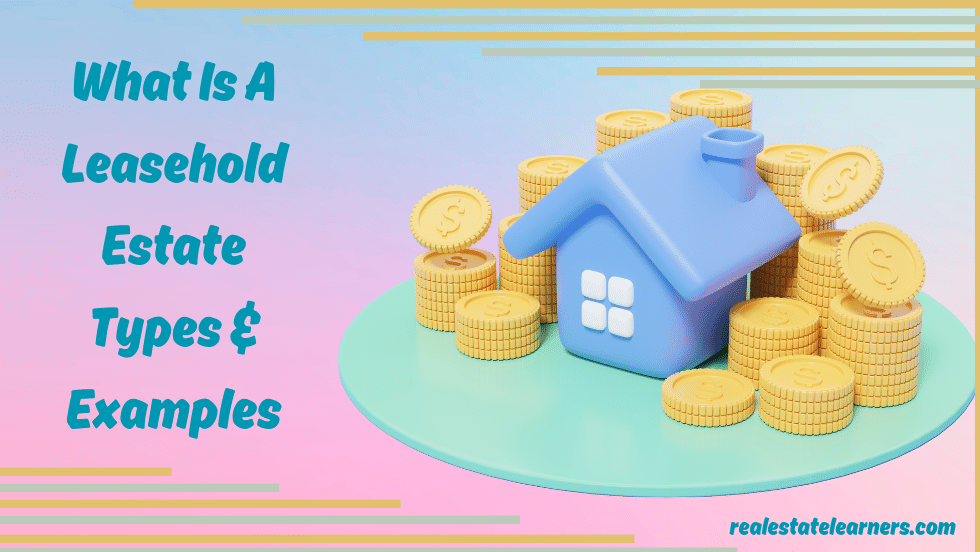A leasehold estate is a type of ownership often used in rental and commercial properties. It refers to the right to use or occupy a property through a lease agreement between the lessor (property owner) and lessee (tenant). This article will explain the elements, characteristics, advantages, and disadvantages of this type of real estate ownership.
What is a leasehold estate?
A leasehold estate is a type of property ownership where the tenant or lessee holds a right of possession for a specified period, usually in exchange for rent payments to the landlord or lessor. This type of ownership is often seen in commercial or residential real estate agreements.
Leasehold estates differ from other types of property ownership in that they are temporary and have a fixed duration. This means that the tenant must vacate the property once the lease expires unless they negotiate a renewal or extension with the landlord.
What is the Example of Leasehold Estate?
Example 1. One example of a leasehold estate is a rental apartment. The tenant signs a lease agreement with the landlord for a specified period, typically one year. During this time, the tenant has the right to occupy and use the property in exchange for paying rent to the landlord. Once the lease ends, the tenant must either move out or negotiate a new lease.
Example 2. Another example is a commercial lease for a retail store. The business owner enters into a lease agreement with the property owner for a certain period to use the space for their business operations. Like the residential lease, once the lease term ends, the business owner must either renew or vacate the premises.
What are the Types of Leasehold Estate?
There are four leasehold estates: fixed-term, periodic, estate at will, and estate at sufferance.
Fixed-term leasehold estate: This lease has a specific start and end date. It can last for any duration agreed upon by the landlord and tenant, such as one year or five years.
Periodic leasehold estate: This type of lease has a recurring time frame, such as month-to-month or year-to-year. It automatically renews unless terminated by the landlord or tenant. The definition of leasehold real estate for years will be the same in the case of fixed-term real estate.
Estate at will: Also known as a tenancy at will, this leasehold estate has no specified end date and can be terminated by either party at any time without notice.
Estate at sufferance: This occurs when a tenant stays on the property after their lease has expired without the landlord’s permission. It is also known as “holding over,” the tenant can be evicted at any time.
Benefits of a Leasehold Estate
For tenants, a leasehold estate provides the opportunity to live or work in a property without making a long-term commitment. This can benefit those still deciding their plans or wanting to test out living in a particular location.
For landlords, a leasehold estate allows them more control over their property and ensures regular income through rent payments. It also allows them to set specific terms and conditions for the tenant, such as pet restrictions or smoking.
Leasehold estates can also be beneficial for both parties in terms of cost. Tenants may have lower upfront costs than purchasing a property outright. Landlords may have fewer expenses since the responsibility for maintenance and repairs often falls on the tenant.
Limitations of a Leasehold Estate
One major limitation of a leasehold estate is that the tenant does not have ownership rights to the property. This means they can only make major changes or renovations with the landlord’s permission.
Another downside for tenants is that they are still responsible for paying rent even if they no longer wish to live in the property. They may also face penalties or legal action if they break the lease terms.
For landlords, a major limitation is that they need full control over their property during the duration of the lease. They must consult with the tenant before selling or making changes.
Conclusion
In conclusion, there areso many factors to consider when considering a leasehold estate. Each property and landlord has different rules and regulations that must be followed.
It is important for the tenant to fully review and understand their lease agreement before signing.
It is also important for the tenant to communicate openly with their landlord if any issues or concerns arise during their tenancy. This can help maintain a positive relationship and protect the tenant’s rights.

Corey has over 15 years of experience as a real estate broker and educator. He is dedicated to providing valuable insights and guidance for those looking to enter the real estate industry.

